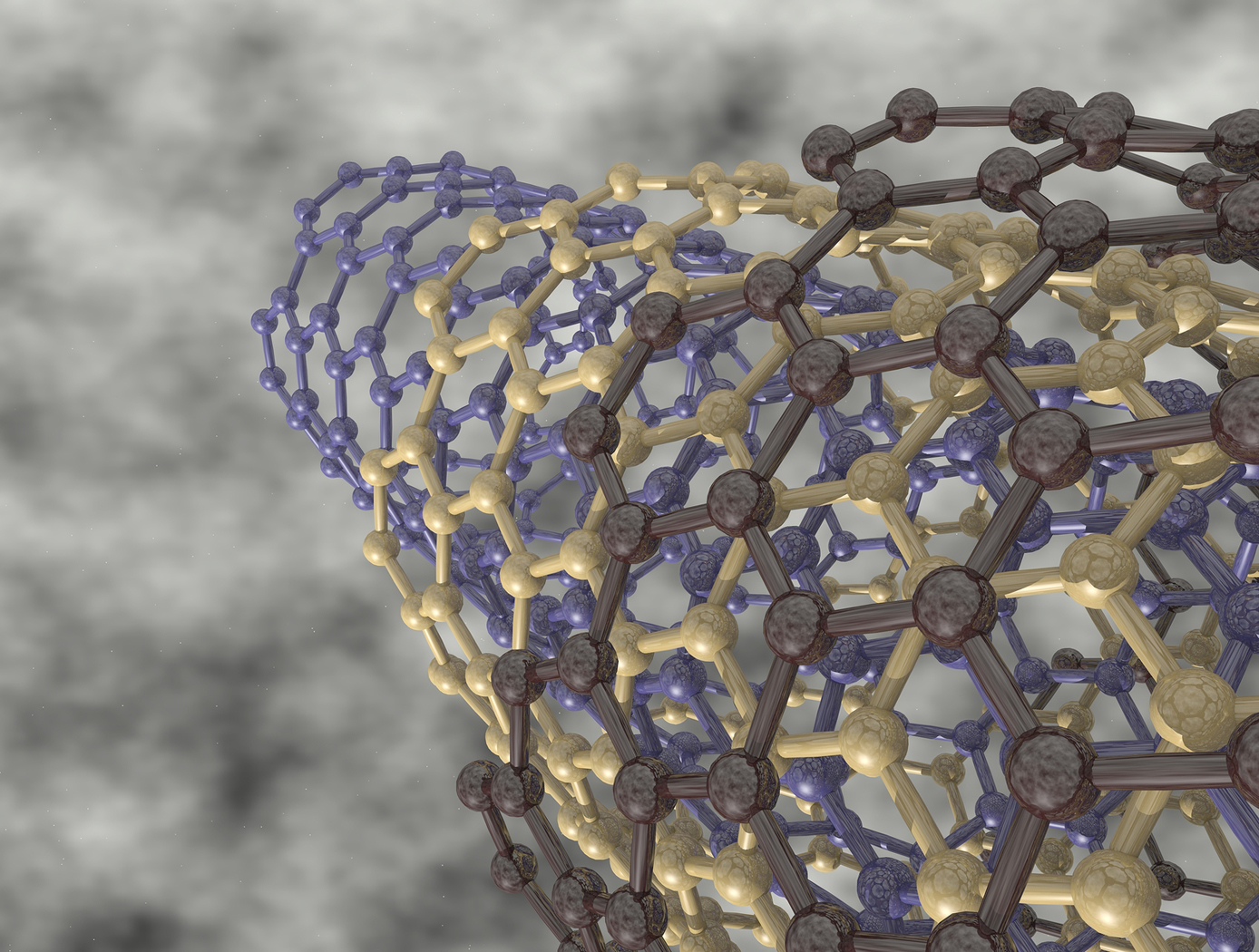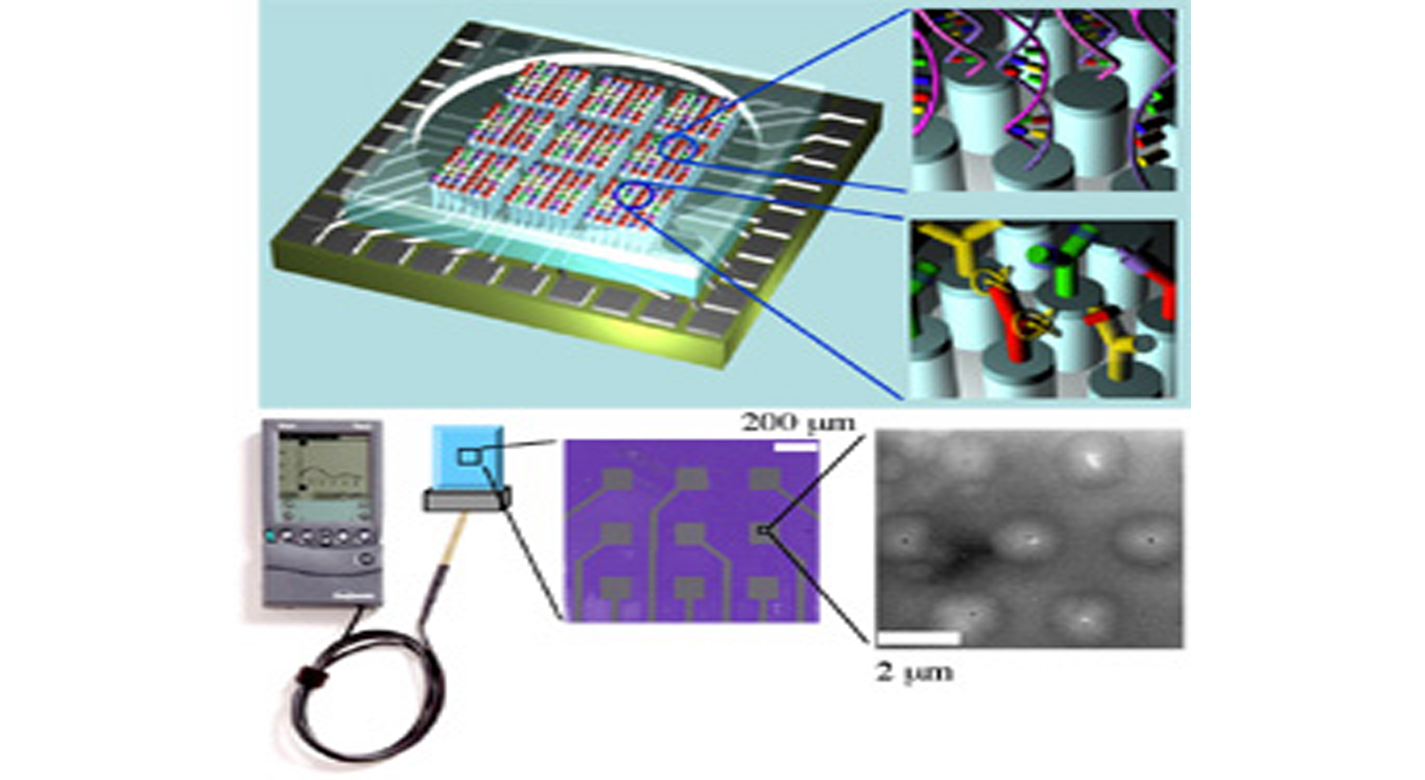Biochemical Sensors Using Carbon Nanotube Arrays
health medicine and biotechnology
Biochemical Sensors Using Carbon Nanotube Arrays (TOP2-104)
Ultrasensitive Label-Free Electronic Biochips
Overview
The reduction of cost and time is the major concern in clinical diagnostics. Low-cost microchips are desired for health monitoring and biomarker detection in space exploration, since conventional clinical lab facilities are bulky and expensive. NASA has successfully demonstrated a miniaturized electronics technology with extremely high sensitivity and simplified sample preparation for in-vitro detecting specific biomarker signatures, which is based on incorporating embedded vertically aligned carbon nanotubes as nanoelectrode arrays in diagnostics devices. The electroactive components inherent in the target molecules can be directly measured with electrocatalytic methods. Labor intensive and costly labeling and amplification processes can be skipped or minimized. This technology fuses micro- and nanotechnologies with biology, which dramatically improves the detection sensitivity so it has a great potential for development of low-cost disposable chips for rapid molecular analysis, that can be carried out with simple handheld devices.
The Technology
Vertically aligned carbon nanofibers (CNFs) are fabricated by wafer-scale plasma enhanced chemical vapor deposition (PECVD) on prefabricated microelectrode pads and encapsulated in SiO2 or polymer dielectrics with only the very end exposed at the surface to form an inlaid nanodisk electrode array. As the size of an electrode is reduced, one can obtain: (1) higher sensitivity, i.e., the signal-to-noise ratio, which is inversely proportional to the radius (r) of the electrode, (2) lower detection limit, (3) higher temporal resolution (proportional to 1/r), and (4) miniaturization. Therefore, nanoelectrodes have great properties for electroanalysis. Carbon nanofibers can be fabricated at wafer scale, as high-aspect-ratio metallic wires, down to a few nanometers in diameter on metal microcontact pads to form well-defined nanoelectrode arrays. In addition, CNFs have a wide potential window, well-defined surface functional groups, and good biocompatibility,which are all highly demanded properties for biosensors. CNF arrays have been successfully fabricated on micropatterns. The electrical and electrochemical properties of the embedded CNF nanoelectrode arrays have been thoroughly characterized to show well-defined nanoelectrode behavior. In some schemes, selective covalent functionalization of probe oligonucleotides, antibodies or aptamers have been achieved through the formation of amide bonds at the exposed end of CNFs. Direct electrochemical detection of a target molecules oxidation signal, which is the signal from an electrochemical label, or change in charge transfer resistance, has been demonstrated for DNA, rRNA, proteins, catecholamines, and ions.


Benefits
- Low cost, simple operation
- Quick detection
- Higher sensitivity (i.e signal-to-noise ratio) and reliability
- Bio compatible
- Can be selectively functionalized
- Much smaller number of target molecules required
Applications
- Biotechnology
- Medicine
- Space exploration
- Homeland protection
- Environmental monitoring
- Early disease diagnosis
- Point-of-care
- Implantable sensors
- Analytical instruments


